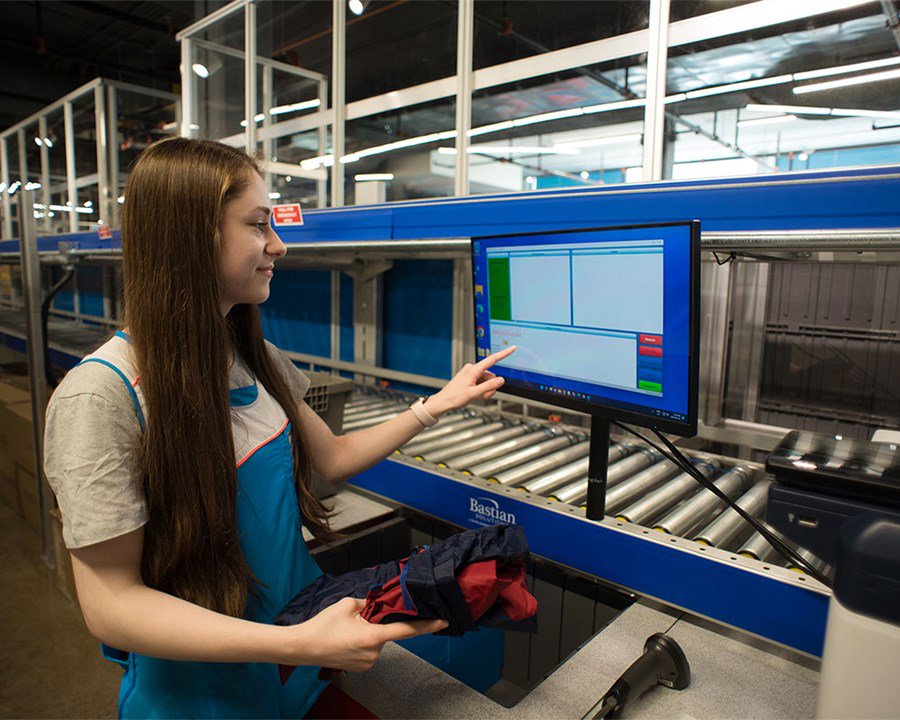
Holiday Order Fulfillment Calls for An Omnichannel Approach
Alex Haines and Bailey Ludlam | 29 November 2023
Sales are on the rise again this holiday season and consumers are shopping in an omnichannel way.
Black Friday, Cyber Monday and sales before and after the Thanksgiving holiday marked at least a week of special discounts and sales. It also marked a year over year increase in retail activity in the United States, spending an estimated $9.8 billion during Black Friday alone, according to Adobe Analytics.
Originally a single day of sales, discounts and deals came early extending the sales period before Black Friday, potentially easing the Friday sales bump. In-store sales increased by 1.1%, while ecommerce sales rose by 8.5% year over year, according to MasterCard SpendingPulse.
Final totals are still being tallied but reports from MasterCard SpendingPulse, Adobe Analytics and various consulting firms indicate that most likely due to the country’s inflation and economic pressures, consumers actively took advantage of the season’s special discounts, searching for the best deals. They are buying “closer-to-need” according to TD Cowen analysts.
Heading into Black Friday, NRF (National Retail Federation) estimated that 15.7 million more people would shop than 2022. Stats also estimated an increase in activity from pre-pandemic 2019. Their survey noted that 61% of polled consumers said they planned to shop during this period “because the deals are too good to pass up.”
Seeing a continued mix of sales – in person, online and BOPIS (buy online but pickup in store) – consumers demonstrated that they continue to shop in “an omnichannel way.” For retailers, staying competitive means evaluating the best way to create operational efficiencies, while delivering a better customer experience to maximize margins. A flexible order fulfillment system can also help navigate the changing nature of peak as consumer behavior changes and peak season sales-periods extend beyond Black Friday.
Managing Online & In Person Sales
Order fulfillment, at its core, hasn’t changed. It is the same as it was years ago. Receive an order, fill it accurately and ship. However, increasingly, companies are needing to balance bulk store fulfillment for in person sales as well as individual, small order fulfillment for ecommerce sales. They require different picking and packing approaches, a multifaceted approach.
With ecommerce on the rise, the degree of in-warehouse individual order fulfillment is shifting company’s operations. An omnichannel strategy that supports both in store and ecommerce, thrives on the right mix of planning, software and equipment.
Why? Omnichannel order fulfillment uses a variety of order completion strategies and, as a result, can encounter pain points in different areas:
- Merchandise availability and inventory control
- Managing different order sources, same inventory
- Consistent customer experience across channels
- Real-time reporting and visibility
- Best shipping and distribution options
This includes managing seasonal demand fluctuations to accommodate peak seasons like Black Friday, Cyber Monday, end of year sales or even back to school summer sales. Despite this year’s increase in sales, Adobe noted that shoppers actively price-shopped. According to their report, about 80% of online orders on Black Friday used standard shipping.
Another notable change in shopping behavior marked the popularity of online ordering and in store, local pickup or BOPIS (buy online, pick up in store). In store shopping may not have seen a significant increase in sales year over year but brick and mortar stores continue to play a crucial role.
Fluctuations, whether it’s to meet a sudden sale increase, labor shortages, change in order profiles and pareto, requires technology solutions that can similarly adjust.
Leveraging Automation for an Effective Omnichannel Fulfillment Center
Warehouse automation solutions like goods to person systems, conveyor and sortation, robotic picking and AGV (automated guided vehicles) or AMRs (autonomous mobile robots) allow scalability to match the growth of demand or increase in SKUs. Whether it’s the expansion of a picking port, addition of a robot or extension of a conveyor line, a material handling integrator can determine the optimal integration approach and supporting software to meet your specific operation’s needs.
With automation increasingly adopted in warehouses, the technology options continue to grow. There are dozens of brands and styles of robotic and automated material handling technologies. However, before you make a selection it’s even more important to consider what, specifically, will help your operations flourish. For example, is it:
- Operation and inventory visibility
- System and labor efficiency
- Software integration
- Scalable technology and equipment
Consider the type of products you are handling, the order breakdown (ecommerce versus in person), order cycle rates, error or return rates, and future growth.
A cube designed, vertical storage solution, for example, can help maximize the volume and SKU variety readily available for faster order fulfillment. Small robotic sortation can offer flexibility for temporary implementation during peak season or to take advantage of minimal space, while still being able to handle a wide variety of products and parcels.
The technology selection and integration approach to maximize your operations can be made most effectively through a data-backed approach that right-sizes the solution and targets your company’s considerations.
Engineering Your Competitive Edge
Alex Haines is the Director of New Business Development & Strategy Accounts at Bastian Solutions. Alex works with customers across various industries, looking for opportunities to help clients automate their supply chain to address both the pain points and opportunities posed by rapidly changing customer demands. Alex has more than 15 years of experience in global supply chain strategy, operations and sales.
Bailey is the Brand Manager at Bastian Solutions, based out of Indianapolis, Indiana. She is PCM certified through American Marketing Association, has a bachelor’s degree from Washington College and 10 years experience working in marketing and journalism. Outside of work, Bailey enjoys spending time with her husband and two children and can usually be found hiking, running or creating with LEGO bricks.
Comments
No comments have been posted to this Blog Post
Leave a Reply
Your email address will not be published.
Comment
Thank you for your comment.